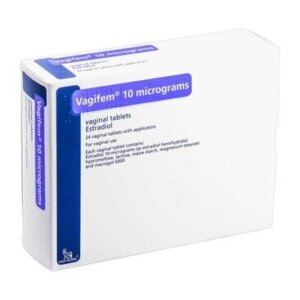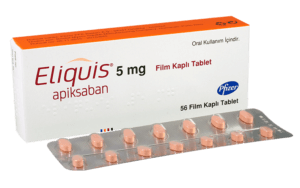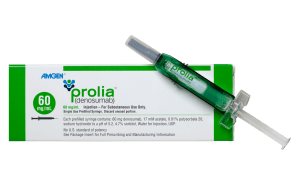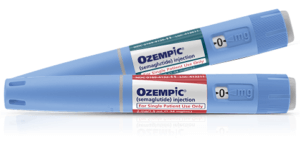 We have gathered some stories from the day-to-day work of clinicians and consultants who get what it’s like living with ADHD and have taken to the public media to share their expertise for the benefit of the millions of teenagers and young adults who live with the disorder.
We have gathered some stories from the day-to-day work of clinicians and consultants who get what it’s like living with ADHD and have taken to the public media to share their expertise for the benefit of the millions of teenagers and young adults who live with the disorder.
Their combined message is that if you’ve ever felt like the world doesn’t see the real you beneath the labels, you can take comfort in the fact that you’re not alone. So many of the teens and young adults with ADHD go about feeling broken or excluded, and nearly always misunderstood. That’s what happens when the common misunderstandings about ADHD run the show. People see the behavior, and not the brain that lies behind it. But once we start peeling back the layers and giving ADHD the kind of support it really needs, something incredible happens. People with ADHD come back to themselves. These aren’t miracle stories.
As we are obliged to say, “names and faces have been changed to protect the identities of the people in the stories,” but nevertheless, they are real reflections of the lives of many, many people. Let’s dive in.
Case #1. Mia
Whenever Mia asked for help, from family, teachers, and friends, she heard the same response…“You seem fine to me.” Now, at age 16, Mia wasn’t “failing” anything, but she was falling apart. Her teachers called her quiet and polite. She did better than average in all her school subjects. Nobody guessed how much she struggled to stay focused, how often she reread pages without absorbing a word, or how anxious she felt just trying to keep up.
People commonly associate ADHD with a hyperactive young boy. The widespread image supports the false belief that ADHD affects boys more than girls and that girls with ADHD do not need attention. Some people think that a girl who maintains good grades cannot have ADHD.
The truth is that ADHD affects girls just as much as it affects boys. Research shows that girls face the same likelihood of developing ADHD as boys do. The higher rate of diagnoses in boys stems from the fact that ADHD symptoms present differently in girls. The classroom disruptor role of ADHD is less common among girls. The inattentive form of ADHD affects many girls who experience daydreaming and disorganization while quietly struggling to focus. The symptoms remain unnoticed because they produce less classroom disturbance. Girls with ADHD tend to avoid detection because of their behavior. The symptoms of attention regulation difficulties in girls often lead teachers to mistake them for being shy or reserved instead of recognizing ADHD.
Mia had inattentive ADHD, but because she wasn’t loud or disruptive, no one noticed. She thought she was lazy. Working with therapists, they found routines that actually matched her brain’s way of working, with boosts to her self-esteem that challenged years of shame, and small tools like visual schedules and body doubling. A non-stimulant med to boost her dopamine levels also helped, but the biggest shift was internal – she stopped fighting her brain and started understanding it.
Case #2: Jalen
Jalen at 14 was the one kid teachers described in their reports as being “difficult.” Having been suspended more than once, always in conflict, everyone thought he just didn’t care. But behind the anger was a smart, frustrated boy who didn’t know how to manage his emotions, or his ADHD.
The reality is that ADHD may not be “visible” in the way a physical disability is, but it can profoundly affect a child’s life. It is not just an excuse for misbehavior. It is a neurodevelopmental disorder that, if unmanaged, can derail a person’s academic, social, and emotional development. Research shows that ADHD significantly increases the risk of a range of negative outcomes. For example, longitudinal studies have found that, compared to their peers, children with ADHD are more likely to not complete high school, or subsequently to drop out of college, to experience teen pregnancy, to get into car accidents, and to encounter a wide range of negative outcomes without proper support. There are serious implications for the non-trivial personality traits.
Case #3: Sofia
When Sofia was 19, she presented as exhausted and perfectionistic to the point of burnout. She’d always tried harder, organized more, pushed herself, because somewhere deep down, she thought her struggles meant she wasn’t trying hard enough, or worst of all, that she wasn’t as good as her peers.
Labeling anyone as “lazy” or “dumb” can be very damaging. It erodes self-esteem and ignores the true support they need. With proper treatment and accommodations, people with ADHD can thrive academically and socially. Many famous high achievers are proof that ADHD is compatible with success. Historical figures like Mozart, Benjamin Franklin, and Thomas Edison are believed to have shown ADHD traits, and modern entrepreneurs such as Richard Branson (Virgin) and David Neeleman (JetBlue) have been diagnosed with ADHD. These examples underscore that having ADHD does not equate to being incapable or unintelligent. People with ADHD simply process information differently. When their talents are nurtured and their challenges supported, they can excel in virtually any field.
Case #4: Leila

It’s important to recognize ADHD in teens and continue support into adulthood when needed. If a teenager with ADHD is suddenly expected to “grow out of it” without any coping strategies, they may flounder as adult responsibilities increase. Experts emphasize that untreated ADHD in adults can lead to a host of problems, from mood disorders to substance abuse, underscoring that this condition is not trivial at any age. On a positive note, with proper management, such as therapy, medication, or diet changes, and skill-building, many individuals learn to adapt and thrive. But dismissing a diagnosis at 18 can be risky. ADHD is not strictly a childhood disorder. It often persists, requiring a lifelong understanding and strategy. Parents of kids with ADHD should plan for the teen years and beyond, rather than assuming the problem will vanish with age. And adults who recognize ADHD traits in themselves should know it’s a valid diagnosis, and it’s treatable at any age.
Case #4: Noah
Noah, by age 15, had had nearly a decade of treatments, including several ADHD meds, but the side effects, jitters, mood swings, and insomnia left him discouraged. His family wanted to try something different. So with the help of a holistic plan that didn’t ditch science, but expanded it to include alternative paths, he switched to dietary changes to boost his brain chemistry in a more natural way.
At the root of the problem for people with ADHD is a deficiency in the neurotransmitter dopamine, and dopamine itself has to be manufactured inside the body from a mixture of “ingredients” that are brought in with food intake. There is no way that dopamine itself can be ingested. There is a blood-brain barrier that prohibits the transport of dopamine into the brain from outside. What does work is to increase the levels of the building blocks for dopamine, most importantly eicosapentaenoic acid (EPA) and docosahexaenoic acid (DHA), which are essential omega-3 fatty acids. While it is possible to boost the intake of omega-3 through diet alone, in real terms, especially for children, it is impractical as well as being very expensive. Fortunately, there are dietary supplements like Zoomind that have been specifically formulated to supply the exact combination of omega-3 and the precursors that the body of people living with ADHD needs to manufacture dopamine.
What these cases have in common
- ADHD isn’t one thing. It shows up differently in everyone.
- Shame and misunderstanding often cause more damage than the symptoms.
- Medication can help, but it’s not the only answer to living with ADHD.
- Providing support for people living with ADHD matters. So does self-compassion.
- There’s no “right” way to have ADHD. But there is a right way to support it, with honesty, flexibility, and care.
FAQs
What are the building blocks of dopamine?
Phenylalanine is an amino acid that is converted into another amino acid, tyrosine, the first precursor in dopamine synthesis. The conversion process utilizes a specific enzyme called tyrosine hydroxylase (TH.) Dopamine production starts in two places:
- In the brain, dopamine is produced primarily in the midbrain and hypothalamus. The production is controlled by both feedback mechanisms and the availability of precursors.
- In the medulla of the adrenal glands, production is less tightly controlled than in the brain, influenced primarily by hormonal signals and stress response. The production level is usually in sync with adrenaline and noradrenaline, which are the hormones that contribute to the fight-or-flight response.
What do we know about the importance of dopamine for people living with ADHD?
Even though the relationship between dopamine and ADHD is not yet fully understood, it is believed that ADHD is associated with changes in dopamine production, release, and processing in the body. This points to the critical point about managing dopamine levels highlighted in this blog. Imbalanced dopamine activity, especially in executive functions and reward processing areas of the brain, can affect attention and behavior control.
The main point of discussion is how best to manage dopamine levels by maintaining sufficient levels in the brain. Since the typical behaviors that are symptoms of ADHD most frequently appear when dopamine levels are depleted, for any treatment to be effective it must prevent the swings in the levels of dopamine.
Current research suggests that ADHD is more related to dopamine system dysfunction in the brain rather than just dopamine level issues. This means that there may be abnormalities in the production, transmission, or reception of dopamine and that looking for a way to address the symptoms of ADHD by managing the levels of dopamine is a simplification of a much more complex condition.
What are the pros and cons of stimulants when living with ADHD?

Advantages of stimulants
They are usually effective in the relief of symptoms in the majority of cases. In general, about 70% of people with ADHD who are treated with stimulants reported some benefits.
Stimulants are quick to work. Some effects are observed in less than an hour or so after the drug has been administered. This makes it easier for the prescribers to alter the dosages and try out different drug types.
There are many common types of stimulant that are available as generics, meaning that they are generally quite affordable.
Disadvantages of stimulants.
Stimulants have a relatively short half life in the blood (usually 12 hours or less), so daily re medication is essential. This means that if a dose is missed, the behaviour can be immediately affected in a negative way.
The drugs can have dangerous side effects, for example, changes in blood pressure, cardiac pulse rate and mood.
Stimulants are highly addictive and are controlled substances because of the possibility of their misuse. Misuse is more likely in older teens and young adults, who use them as “speed”. In extreme cases, people can crush the pills, snort the powder, or dissolve it in water and inject the liquid, creating extreme highs. Another possible misuse is in reselling the drugs to third parties for illicit use, which is a criminal offence and can result in imprisonment.
When the drug is suddenly stopped, withdrawal symptoms such as extreme tiredness, sleep disorders, and depression can occur. It should only be decreased under medical advice.
Because treatment is usually long-term, the doses may have to be gradually increased over time as the body becomes less responsive to the effects of the drug. This can raise the chances of addiction. Younger people living with ADHD who use stimulants for an extended period may experience reduced growth rates or develop mental health issues.


















